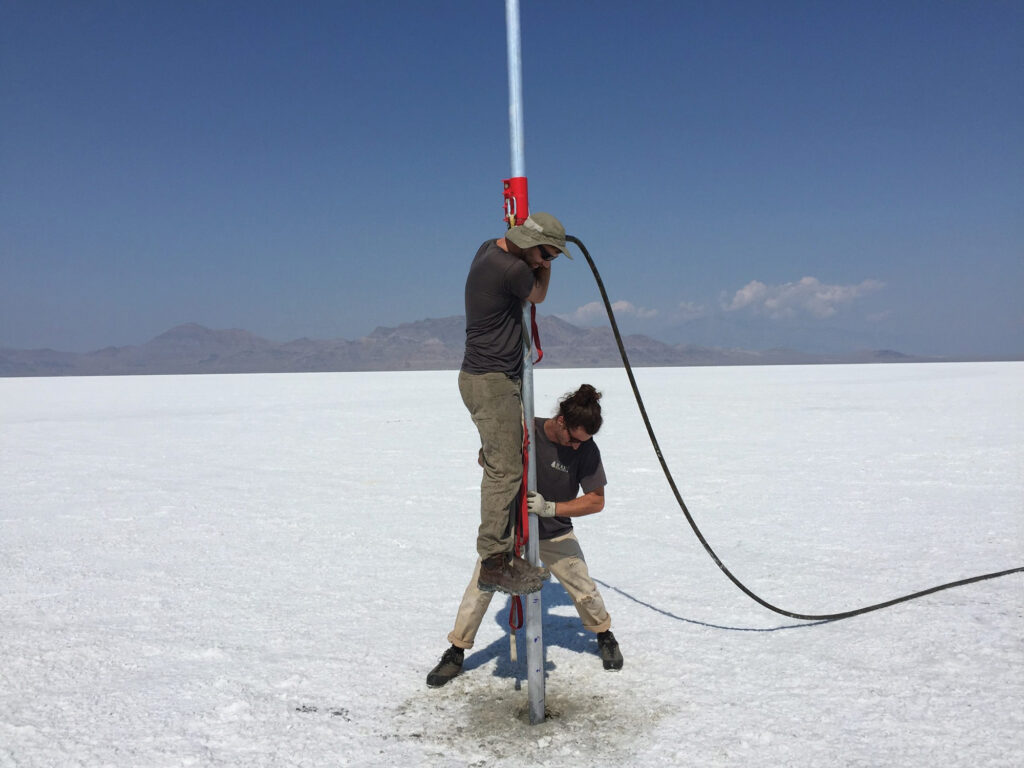
Salt crusts at Utah’s Bonneville Salt Flats began forming long after Lake Bonneville vanished, unveiling a dynamic geological history far different from previous assumptions, according to new research by the U. This study, drawing on radiocarbon analysis of pollen in salt cores, indicates that the iconic salt flats started accumulating between 5,400 and 3,500 years ago, debunking the theory that they were a direct result of Lake Bonneville’s retreat 13,000 years ago.
The Bonneville Salt Flats, stretching over 40 square miles in the Great Basin Desert, are renowned for their flat, white expanse, serving as a venue for land-speed records and as a picturesque setting in films such as Buckaroo Banzai and Pirates of the Caribbean. The research, led by Jeremiah Bernau PhD’22, utilized advanced drilling techniques and radiocarbon dating to unearth the true age of these salt crusts and the underlying sediment layers.
“This now gives us a record of how the Bonneville Salt Flats landscape responds to environmental change,” Bernau explains. He highlighted the significance of the findings for understanding the area’s geological evolution and its response to past climate variations. The study revealed that the flats’ formation followed a period of significant erosion and gypsum sand accumulation, reshaping our view of this landscape’s stability over the last 10,000 years.
Senior author Brenda Bowen PhD’05, a geology professor and director of the U’s Global Change and Sustainability Center, emphasized the broader implications of their findings. “We can show that a lot of material was removed before the salt came in,” says Bowen, drawing parallels to the contemporary issues facing the Great Salt Lake and the potential for dust erosion.
Since 1960, scientists have been monitoring the salt flats as a part of lease agreements and management plans overseen by the federal Bureau of Land Management. The playa lost about a third of its salt volume over the past six decades.



Comments
Comments are moderated, so there may be a slight delay. Those that are off-topic or deemed inappropriate may not be posted. Your email address will not be published. Required fields are marked with an asterisk (*).